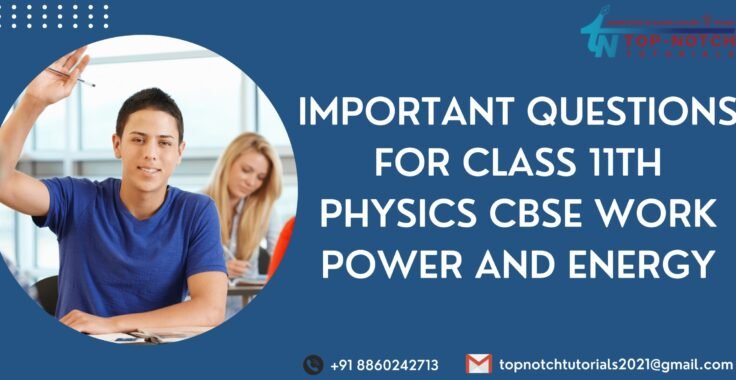
Work, power, and energy are vast Class 11 Physics CBSE topics. Understanding work power and energy requires students to develop an appreciation of the interactions between a variety of forces at play. Science tuition for class 11 in dwarka is ideal for students seeking a head start in their academic careers. To maximize student achievement on this unit, below are some key questions and explanations for why they should be asked and answered. These questions can help students grasp the importance of Newton’s Laws by providing more insight into what drives them, enabling better understanding while preparing for tests or exams.
Question 1.
What is the source of the kinetic energy of the falling raindrops?
Question 2.
A spring is stretched. Is the work done by the stretching force positive or negative?
Question 3.
What is the type of collision when?
Question 4.
What is the work done by the centripetal force? Why?
Question 5.
When an arrow is shot, wherefrom the arrow will acquire its K.E.?
Question 6.
When is the exchange of energy maximum during an elastic collision?
Question 7.
Does the work done in raising a load onto a platform depend upon how fast it is raised?
Question 8.
Name the parameter which is a measure of the degree of elasticity of a body.
Question 9.
A light and a heavy body have equal momentum. Which one of them has more K.E.?
Question 10.
In a tug of war, one team is slowly giving way to the other. What work is being done and by whom?
Question 11.
Two protons are brought closer. What is the effect on the potential energy of the system?
Question 12.
Where is the energy of a vertically projected body maximum?
Question 13.
What should be the angle between the force and the displacement for maximum and minimum work?
Question 14.
Out of a pair of identical springs of force constants, 240Nm-1 one is compressed by 10 cm and the other is stretched by 10 cm. What is the difference in the potential energies stored in the two springs?
Question 15.
Does the P.E. of a spring decreases/increase when it is compressed or stretched? Why?
Question 16.
Can a body have momentum without energy?
Question 17.
A bob is pulled sideway so that string becomes parallel to horizontal and released. Length of the pendulum is 2 m. If due to air resistance loss of energy is 10% what is the speed with which the bob arrives the lowest point?
Question 18.
How does a perfectly inelastic collision differ from perfectly elastic collision? Two particles of mass m1 and m2, having velocities u1 and u2, respectively, make a head-on collision. Derive the relation for their final velocities?
Question 19.
In lifting a 10 kg weight to a height of 2m, 250 Joule of energy is spent. Calculate the acceleration with which it was raised?(g=10m/s2 )
Question 20.
20 J work is required to stretch a spring through 0.1 m. Find the force constant of the spring. If the spring is stretched further through 0.1m calculate the work done?
Question 21.
Find the elevation of the outer tracks with respect to the inner. So that the train could safely pass through the turn of radius 1km with a speed of 36km/hr. Separation between the tracks is 1.5m?
Question 22.
A block of mass m is placed over a smooth wedge of inclination θ. With what horizontal acceleration should the wedge be moved so that the block must remain stationary over it?